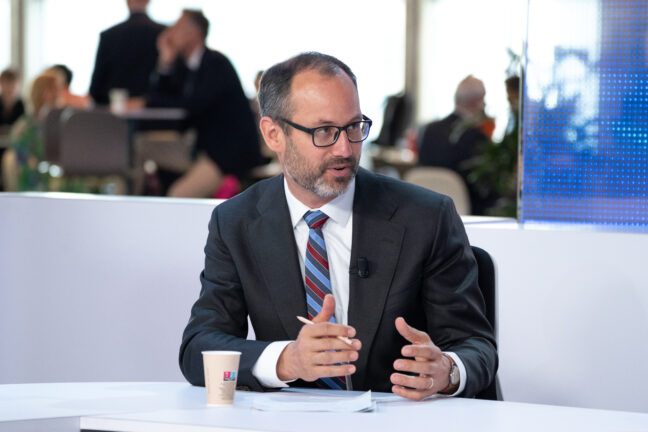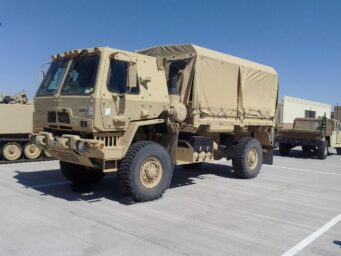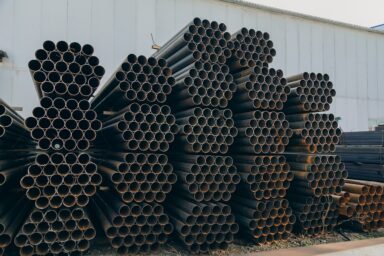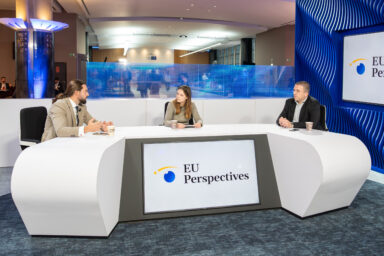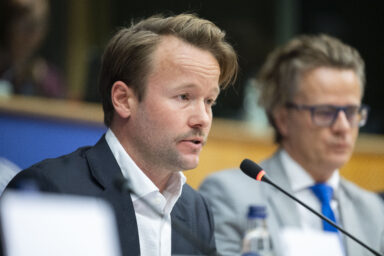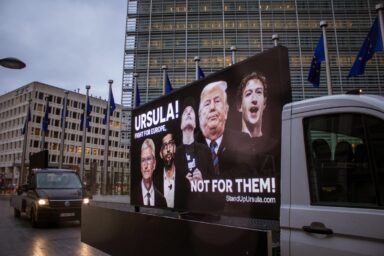The European Union has done a lot to save itself from ruin at the hands of adversary powers—but still nowhere near enough. Is the Union’s institutional, political, and financial straitjacket simply too tight, or is there a way out? In the 14 May episode of the EU Perspectives podcast, MEP Jan Farský (EPP/CZE) discussed European defence with economist Juan Mejino-López of the Bruegel think-tank and Burkard Schmitt, Security and Defence Director of The Aerospace, Security and Defence Industries Association of Europe.
Well over three years into a war on its eastern flank, European defence is mostly the same. Indeed, it took a spectacular about-face by Washington for a modicum of urgency to creep into the Brussels discourse. But even the bloc’s greatest optimists concede that the best outcome may see anything resembling an effective defence system no sooner than in 2030. Has anything changed since February 2022—and is it enough to deter a potential invader?
Not peacetime anymore
To MEP Jan Farský (EPP/CZE), the answers are yes and no. „I’m definitely sure that there is a change, but not sufficient. We haven’t done enough. The war on Ukraine started in 2014, not in 2022. But we still pretend that we live in peacetime and that we don’t need to take care of our defence, of our defence industry, of our defence policies,“ he said in the EU Perspectives podcast on the topic.
In a Europe increasingly defined by geopolitical turbulence and shifting security paradigms, the continent’s piecemeal defence policies have become a critical vulnerability—one that demands urgent, collective solutions. “We still live in a fragmented Europe that makes Europe vulnerable and fragile, and that I think we have to solve. And nowadays we still don’t have enough tools to improve the defensibility of Europe. But it’s not an EU question, because defence is a matter of member states,“ Mr Farský observed.

Lack of political will
He argued that the member states‘ reluctance to integrate strategies and resources leaves the bloc exposed. The core challenge, the Czech MEP suggests, lies not in capability but in political will. „There’s a problem of political will. I think that, somehow, we still don’t feel the threat enough,“ the member of the Parliament’s Committee on Industry and Research said.
“We have 23 member states of the European Union that are also the members of NATO. And each one state has built its own national security, national defence policy, national defence industry,“ Mr Farský elaborated further. „In Europe, we have 178 different systems, types of main battle tanks, jet fighters and so on. The United States has just 30 of them. So they can really focus on research and development, industry, long-term orders; and that’s helpful not only for the industry but also for the business and also, in the end, for the security. That’s something we have to do,“ he stressed.
You might be interested
Improved coordination on European level is something that all the podcast participants paid a lot of attention to. “As Mr Farský has mentioned, for every model of military equipment that the US has sent to Ukraine, we are sending four,“ remarked Bruegel’s research analyst Juan Mejino-López. “This reflects the fragmentation that we have in the international markets. It also reflects the higher prices that we’ve been paying, and the lack of capacity that we are now building. But still, as I mentioned, it takes time,“ the Spanish researcher said.
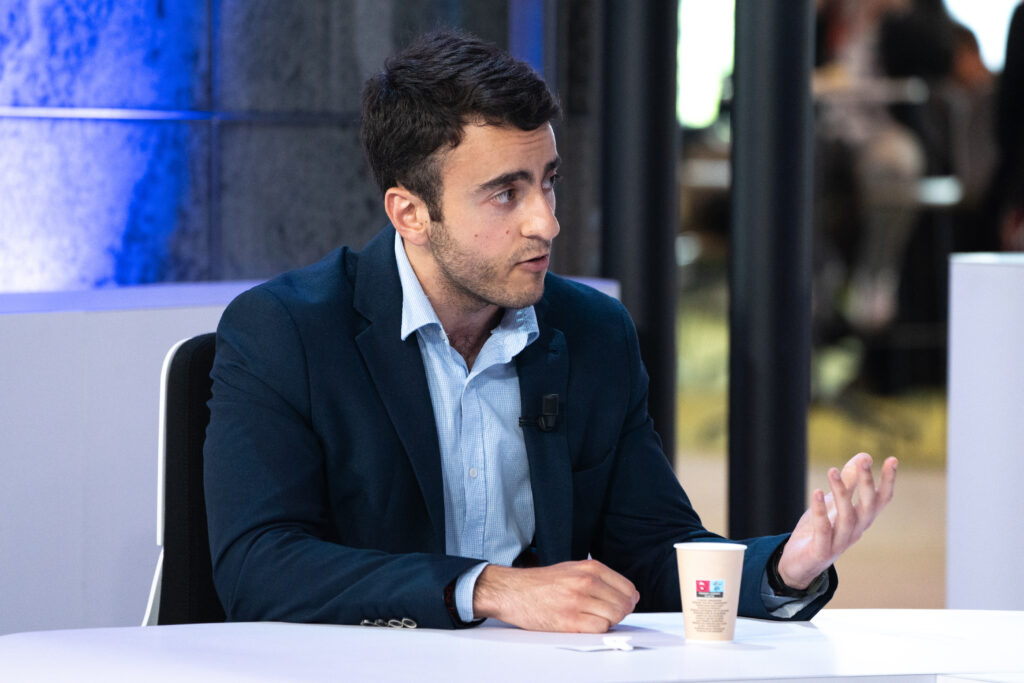
Strategic disadvantage
Burkard Schmitt of ASD Europe, an association representing about 4000 companies engaged in the defence industry, agreed—up to a point. “The problem for industry is that you don’t change an industry overnight, right? And in this case it is a particular challenge because this industry depends on national governments as customers. So the companies can only follow what member states and what national governments as customers tell them to do,“ the security and defence director of his institution said.
Either way, the fragmentation undermines Europe’s ability to prioritise security over the aforementioned parochial industrial interests, the debaters broadly agreed. The myopia weakens the EU’s collective security and cedes strategic advantage to the bloc’s adversaries.
The financial implications are stark. According to European Parliament research cited by Mr Farský, closer collaboration on defence spending could save between €25bn and €75bn annually. Yet roughly 80 per cent of Europe’s defence expenditure currently flows outside the bloc, with 63 per cent directed to the US. Redirecting even a fraction of this spending internally, the Czech MEP contends, could bring numerous benefits. “With this money, we could build the industry here, we could build research and development in Europe, we could have more well-paid jobs here. So that’s something we should look at not as a threat, but as an opportunity,“ he urged.
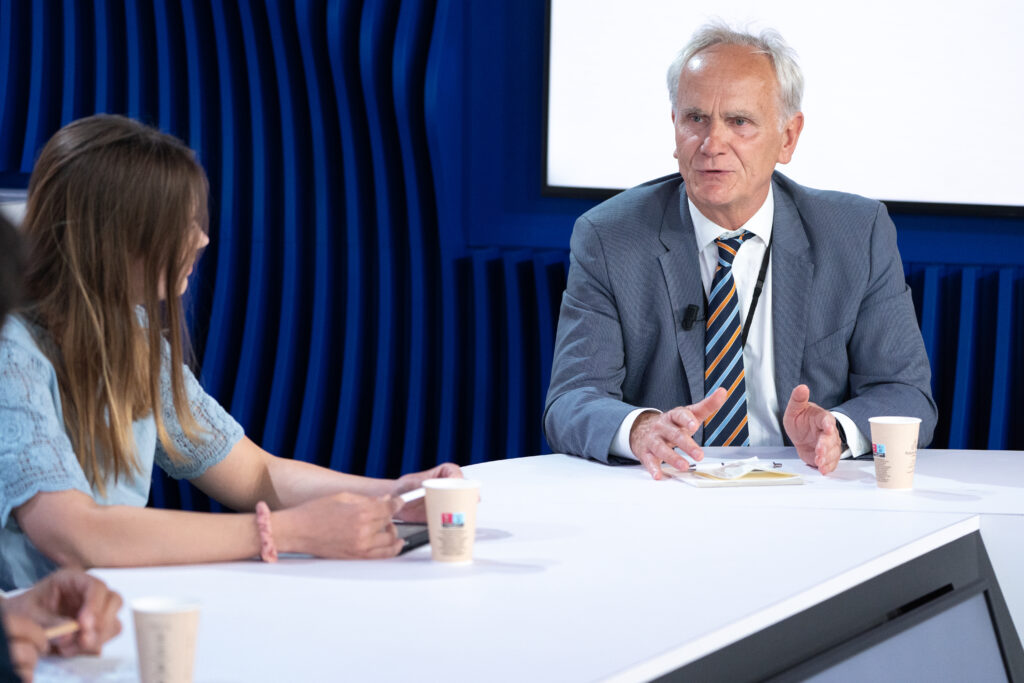
Critical infrastructure
Still, companies that are not competitive in the defence industry may feel threatened by joint procurement, the lawmaker touched a potentially sore point. But it should be outweighed by the prospect of the potential benefits, he said. “It’s an opportunity for the whole of Europe, because spending money on defence—and it is not only defence, but also resilience—means, among other things, spending money on infrastructure,“ Mr Farský said.
Critical to this vision is the concept of dual-use spending—investments that serve both civilian and military needs. High-speed rail networks, for instance, could double as troop transport corridors; quantum computing research could enhance both cybersecurity and battlefield communications.
Such an approach, Mr Farský suggests, would not only bolster defence but also help accelerate Europe’s technological catch-up with the US and China, whose R&D budgets dwarf the EU’s. The alternative—persisting with fragmented national programmes—risks leaving Europe outspent, out-innovated, and outmanoeuvred.
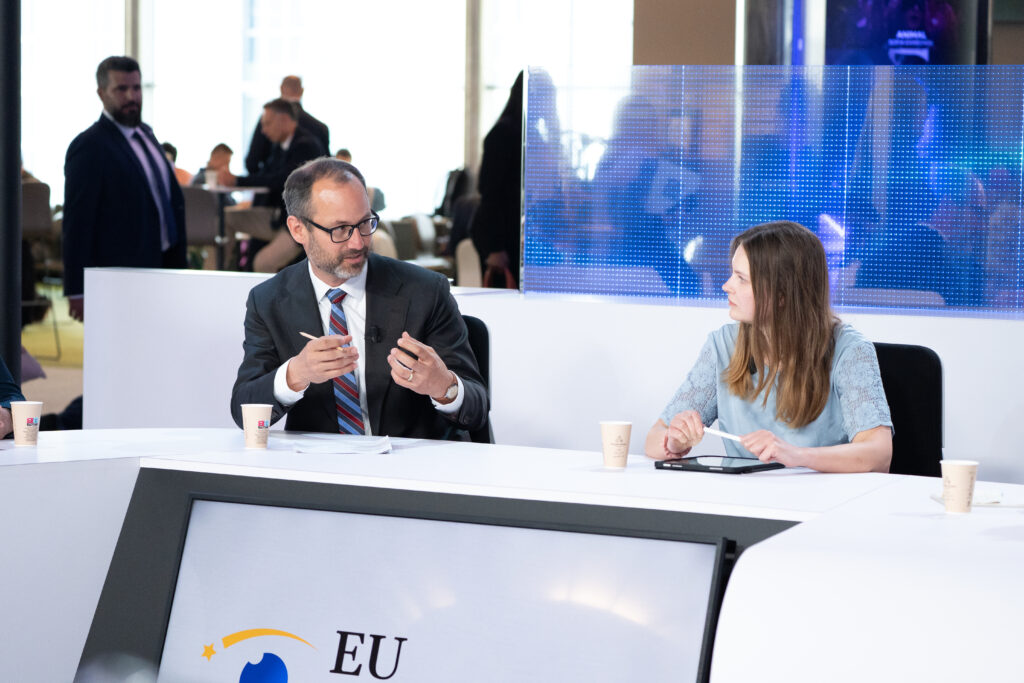
ReArm Europe is not sufficient
The absence of such thinking, in Mr Farský’s view, is the most obvious flaw of the European Commission’s ReArm Europe initiative. While a step forward, it is insufficient, he says. “I think that the key word here is trust within Europe. And when there’s not enough trust among the European states, there will never be better cooperation among the states. Look at the Kubilius white paper: it says okay, let’s invest more better together and European. And doing this means that we will help not only the defence sector, but we will help the whole of Europe, the entire European economy.“
In his view, ReArm Europe is simply not enough. „Frankly, I think that this program is fine, but the amount of money being used conditionally in a collaborative way is quite low. It does imply higher investment, but the overall funding level remains low,“ the EPP lawmaker opined.
He advocates instead for a dedicated European defence mechanism—a pooled fund financed either through member-state contributions (mentioning a range of 0.25 to 0.5 per cent of GDP, hypothetically) or joint Eurobonds. This would enable large-scale collaborative projects, such as a continent-wide air-defence shield or shared satellite networks, while fostering the sine qua non issue, trust through shared stakes in outcomes.
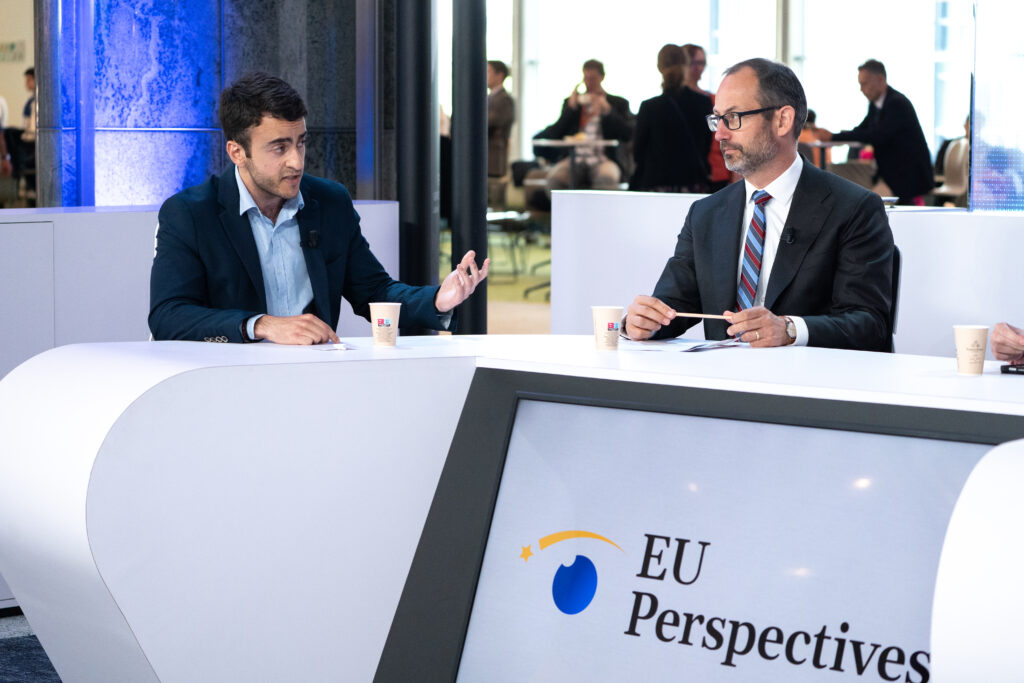
Investment, not a fiscal drain
The political hurdles are formidable—not least resistance to mutualised debt—but Mr Farský insists the post-Ukraine war era demands “wartime thinking” in financing. „We are not in peacetime anymore,“ he exhorted.
Defence spending should be reframed as strategic investment rather than fiscal drain, he said. By channelling resources into shared priorities—from next-generation arms systems to AI-driven logistics—Europe could simultaneously enhance its security, economic competitiveness, and technological edge. For Mr Farský, this recalibration is existential: without deeper integration, the bloc risks becoming a “prey for anyone“, meaning adversarial powers.
Yet the path forward remains fraught. Defence integration requires surrendering slivers of national sovereignty—a prospect many governments still resist. Trust, Farský acknowledges, is in short supply. His solution: start small. Joint procurement programmes, cross-border R&D ventures, and infrastructure projects with dual applications could serve as incremental confidence-building measures. Over time, these might pave the way for more ambitious integration—a true “European pillar” within NATO.

Pragmatism first
When pressed on priorities, Farský avoids prescribing grand institutional overhauls. The immediate focus, he argues, should be on proving the tangible benefits of cooperation—better equipment, cost savings, industrial growth—to sceptical member states. Only through demonstrable gains can the political momentum for more mutual trust and deeper unity be sustained.
ASD’s Burkard Schmitt agreed, and expanded on the subtopic of trust. „We have to build trust also between EU institutions, and also between member states and the Commission. There is a lot of turf battles between organizations that are not helpful.“
But Mr Farský’s stance is, above all, one of pragmatism, reflective of Europe’s complex realities: a call not for revolution, but for the relentless, unglamorous work of alignment. In the Czech MEP’s calculus, the alternative—a fragmented Europe persisting in the illusion of safety—is no longer tenable. The continent’s vulnerabilities are laid bare; the task now is to forge strength from them.
